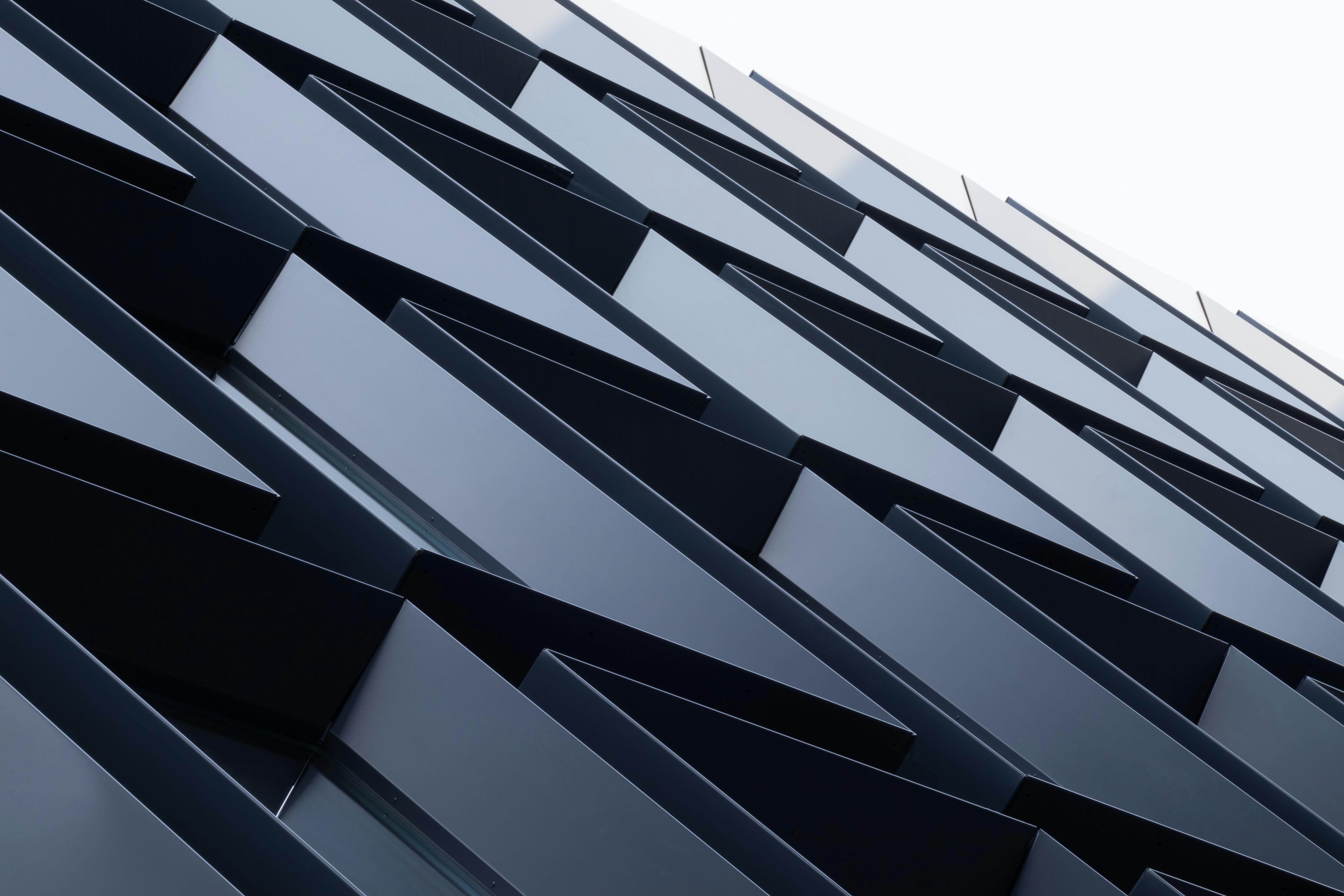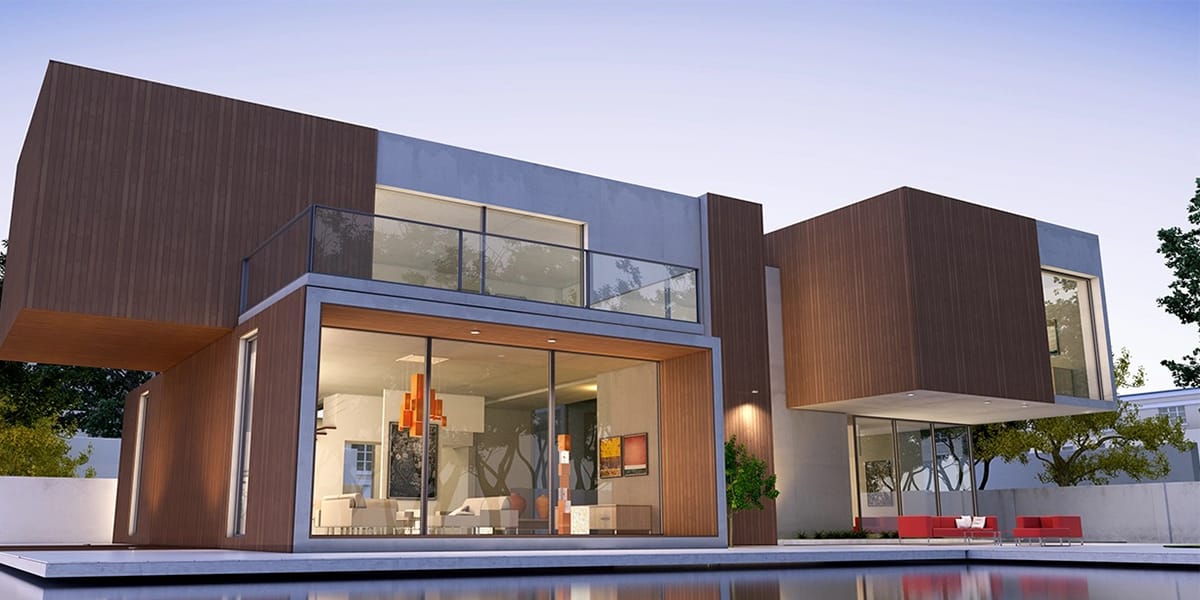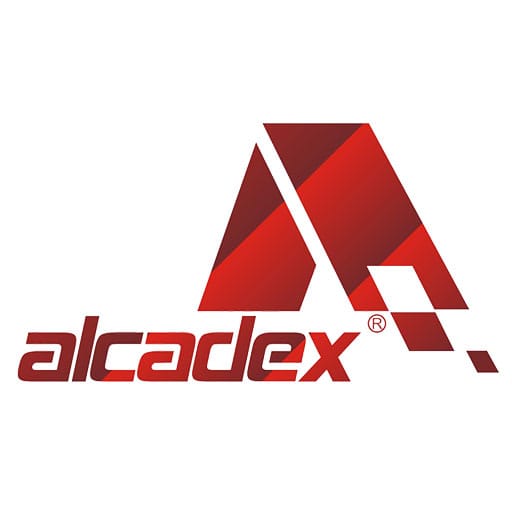
29 Mar A Comprehensive Guide to Aluminium Composite Panels
Table of Contents
- 1 Introduction to Aluminium Composite Panels (ACP)
- 2 Applications of Aluminium Composite Panels
- 3 Types of Aluminium Composite Panels
- 4 Benefits of Using Aluminium Composite Panels
- 5 Installation Process of Aluminium Composite Panels
- 6 Maintenance of Aluminium Composite Panels
- 7 Trend Towards Sustainable Aluminium Composite Panels
- 8 Common Myths and Misconceptions About Aluminium Composite Panels
- 9 Conclusion and Future of Aluminium Composite Panels
Introduction to Aluminium Composite Panels (ACP)
Aluminium Composite Panels (ACP) have emerged as a prominent choice in the construction and design industries, owing to their innovative composition and multifaceted benefits. ACPs consist of two thin layers of aluminium enclosing a non-aluminium core, which can be made from various materials, including polyethylene or mineral-filled cores. This unique construction gives ACPs their distinctive properties, combining the strength of aluminium with the lightweight nature of the composite material.
The lightweight quality of ACPs is particularly advantageous in modern architectural applications, where structural integrity and ease of handling are critical. While traditional materials can be cumbersome and labor-intensive to work with, ACPs reduce the overall weight of building projects, facilitating easier transport and installation. This inherent portability allows for enhanced efficiency during the construction process, subsequently minimizing labor costs and project timelines.
In addition to their lightweight nature, ACPs offer remarkable durability and resistance to various environmental factors, such as UV rays, moisture, and extreme temperatures. This resilience not only ensures that ACPs maintain their aesthetic quality over time but also reduces the need for frequent maintenance, making them a cost-effective solution in the long run. Furthermore, the surface of aluminium composite panels can be treated with various finishes, allowing for an extensive range of colors and textures. This versatility enables architects and designers to seamlessly integrate ACPs into diverse architectural styles, creating visually striking facades that meet both functional and aesthetic demands.
Given these unique characteristics, it is clear why aluminium composite panels have gained popularity across various sectors, including commercial buildings, residential homes, and signage. Their balance of functionality and design makes them an ideal choice for contemporary architectural solutions, setting the stage for further exploration of their applications and installation techniques in the following sections.
Applications of Aluminium Composite Panels
Aluminium Composite Panels (ACPs) are renowned for their versatility, making them a preferred choice across various sectors. In residential buildings, ACPs are increasingly used for façades, balconies, and cladding due to their lightweight nature and aesthetic appeal. They provide homeowners with the opportunity to create unique designs while ensuring durability and energy efficiency. The material’s ability to withstand harsh weather conditions further enhances its suitability for external applications.
Commercial buildings also significantly benefit from the use of ACPs. These panels are widely employed in office towers, shopping malls, and hotels for their modern appearance and exceptional insulation properties. The smooth finish of ACPs allows architects and designers to achieve innovative and sleek looks that attract consumers and enhance brand identity. Moreover, ACPs can be easily customized in various colors and patterns, making them an ideal solution for businesses looking to stand out in competitive markets.
In industrial applications, ACPs are used in warehouses and manufacturing plants, providing both functional and aesthetic benefits. They serve as cladding materials that contribute to energy savings by improving thermal insulation. The durability of ACPs also makes them resistant to corrosion and damage, thereby reducing maintenance costs over time.
Aside from architectural uses, ACPs play a significant role in advertising and signage. Their smooth surface allows for high-quality printing, enabling businesses to create vibrant and eye-catching displays. Whether used for outdoor signs or indoor promotional materials, ACPs offer longevity and visual impact, ensuring that advertisements remain effective over time.
The diverse applications of Aluminium Composite Panels underscore their value across multiple fields, demonstrating their ability to fulfill both functional and artistic needs in contemporary construction.
Types of Aluminium Composite Panels
Aluminium composite panels (ACP) are renowned for their versatility and aesthetic appeal, making them a popular choice in architectural applications. ACPs generally consist of two thin layers of aluminium enclosing a non-aluminium core, which can vary widely in material and structure. There are several types of ACPs available, each tailored to specific use cases.
One of the primary distinctions among aluminium composite panels lies in the core material. The most common core options include polyethylene (PE), polyurethane (PU), and mineral-filled core (FR). PE is lightweight and offers good insulation, making it suitable for internal applications and non-fire-rated façades. PU cores, on the other hand, provide superior thermal insulation and sound proofing, making them ideal for energy-efficient buildings. Mineral-filled cores, often classified as fire-retardant panels, are essential for high-rise buildings and structures requiring compliance with stringent fire safety regulations.
The surface finish of ACPs is another significant consideration. These panels come with various coatings including PVDF (polyvinylidene fluoride), polyester, and powder coating. PVDF offers high resistance to UV radiation and weathering, which makes it an excellent choice for outdoor applications exposed to harsh environmental conditions. Polyester coatings are typically used for interior applications where durability is vital but extreme weather resistance is not required. Powder-coating provides a durable finish that can be applied in various colors, adding a layer of customization and aesthetic enhancement to architectural designs.
Additionally, aluminium composite panels are available in multiple thickness options, typically ranging from 3mm to 6mm, allowing designers to select panels that best fit their specific project needs, whether for lightweight installations or sturdier constructions. By understanding the variations in core materials, coatings, and thickness, architects and builders can effectively choose the appropriate type of aluminium composite panels for their applications, ensuring optimal performance and visual appeal.
Benefits of Using Aluminium Composite Panels
 Aluminium Composite Panels (ACPs) offer a multitude of advantages that make them an ideal choice for various applications, including exterior cladding, signage, and interior design. One of the primary benefits of ACPs is their exceptional thermal insulation properties. These panels can significantly reduce heat transfer, helping to maintain comfortable indoor temperatures and ultimately contributing to energy efficiency. This characteristic is particularly valuable in regions with extreme weather conditions, where temperature regulation is essential.
Aluminium Composite Panels (ACPs) offer a multitude of advantages that make them an ideal choice for various applications, including exterior cladding, signage, and interior design. One of the primary benefits of ACPs is their exceptional thermal insulation properties. These panels can significantly reduce heat transfer, helping to maintain comfortable indoor temperatures and ultimately contributing to energy efficiency. This characteristic is particularly valuable in regions with extreme weather conditions, where temperature regulation is essential.
In addition to thermal insulation, ACPs are well-regarded for their soundproofing capabilities. The sandwich structure of the panels, comprising two layers of aluminium enclosing a non-aluminium core, helps to minimize noise transmission, making them a preferred option in urban environments or locations close to bustling roads. This feature not only enhances comfort within buildings but also contributes to a more peaceful living or working environment.
Another compelling advantage of Aluminium Composite Panels is their fire resistance. Many ACPs are designed to meet rigorous fire safety standards, providing an additional layer of protection for buildings. This attribute is critical, particularly in commercial settings where safety regulations are stringent, as choosing fire-resistant materials can help mitigate risks and enhance occupant safety.
Moreover, maintenance of ACPs is remarkably straightforward. The panels come with a smooth surface that is easy to clean and can withstand harsh weather conditions without significant wear. This ease of maintenance not only saves time but also reduces costs associated with long-term upkeep.
Finally, environmental sustainability is a key consideration with ACPs. Many manufacturers prioritize eco-friendly production processes, and the materials themselves can be recycled. As society increasingly leans towards sustainable building practices, the use of Aluminium Composite Panels aligns with these green initiatives while still delivering the performance and aesthetic appeal that modern architecture demands.
Installation Process of Aluminium Composite Panels
The installation of Aluminium Composite Panels (ACPs) is a process that requires meticulous planning, attention to detail, and a solid understanding of the necessary tools and safety precautions. The first step in the installation process is to gather all required tools, which typically include a measuring tape, utility knife, drill, screwdrivers, and level. Additionally, it is important to ensure personal protective equipment (PPE) such as gloves and safety goggles are worn to minimize risks during the installation.
Once the tools are ready, the installation area must be prepared. Begin by measuring and marking the layout for the ACPs on the wall or surface where they will be installed. Ensure that the surface is clean, dry, and free of any debris that may affect adhesion. It is advisable to account for expansion and contraction by leaving a small gap between panels and adjacent structures.
The actual installation of ACPs typically involves several steps. Start by cutting the panels to size using a utility knife for thinner panels or a saw for thicker ones. Once the panels are cut, they should be positioned and secured using fasteners, ensuring that they are level and properly aligned. For a secure hold, it may be beneficial to use an adhesive, in conjunction with mechanical fasteners.
During the installation, various challenges may arise, such as issues with misalignment or panel damage. To mitigate these risks, it is crucial to double-check measurements and handle the panels carefully. Moreover, having an extra pair of hands can facilitate handling larger panels, reducing potential strain or mishandling.
Finally, regular reviews of the installation guide provided by the manufacturer are essential to ensure compliance with industry standards. By observing these guidelines and maintaining a meticulous approach, both DIY enthusiasts and professional installers can achieve a successful installation of Aluminium Composite Panels.
Maintenance of Aluminium Composite Panels
Aluminium Composite Panels (ACPs) offer a versatile and aesthetically pleasing solution for both interior and exterior applications. To ensure their longevity and maintain their visual appeal, it is essential to implement an effective maintenance routine. Regular care not only keeps the panels looking pristine but also extends their lifespan, making them a worthwhile investment in building materials.
The maintenance of ACPs primarily involves routine cleaning to avoid the accumulation of dirt, grime, and pollutants. It is recommended to clean the panels with a soft cloth or sponge and a mild detergent mixed with water. Avoid using abrasive materials or harsh chemicals, as they can scratch the surface of the panels and lead to deterioration. For more stubborn stains or marks, a solution of isopropyl alcohol or a pH-neutral cleaning agent can be employed, keeping the integrity of the finish intact while effectively eliminating blemishes.
The frequency of maintenance typically depends on the environment in which the ACPs are installed. In urban areas with higher pollution levels or coastal regions with salt exposure, cleaning should be conducted every few months. Conversely, in cleaner environments, a bi-annual maintenance schedule may suffice. By adhering to these guidelines, homeowners and building managers can prevent premature wear and tear on the panels.
Common issues such as scratches or minor dents can be addressed with careful touch-up paint that matches the original panel finish. For deeper scratches, however, it may be advisable to consult with a professional for repair options. Proper attention to these details will ensure that the aesthetic appeal of Aluminium Composite Panels remains unblemished over time.
Trend Towards Sustainable Aluminium Composite Panels
In recent years, the construction and architectural design sectors have witnessed an increasing trend towards sustainability, particularly regarding materials selection. Aluminium composite panels (ACPs) have emerged as a prominent choice due to their versatility, durability, and favorable environmental impact. Manufacturers are actively striving to create eco-friendly ACPs, incorporating sustainable materials and processes that align with the principles of environmentally conscious design.
One of the key aspects of this trend is the use of recyclable materials in the production of aluminium composite panels. Many manufacturers are now emphasizing the use of recycled aluminium content in their ACP offerings. By integrating recycled aluminium into the manufacturing process, the overall carbon footprint of the product is significantly reduced, aligning with growing environmental standards worldwide. Furthermore, these panels themselves are fully recyclable at the end of their life cycle, which further underlines their sustainability credentials.
Additionally, advancements in coating technologies have allowed manufacturers to produce ACPs that feature eco-friendly finishes. These coatings are often free from harmful chemicals and are applied using processes that minimize energy consumption. As a result, the impact of production on the environment is mitigated, while also maintaining high aesthetic standards and durability of the panels. The industry is steadily moving away from materials that contribute to environmental degradation, adopting more sustainable alternatives instead.
Moreover, with increasing awareness regarding climate change and resource depletion, stakeholders across various sectors are demanding greater accountability in terms of sustainability. This shift in consumer preference is prompting manufacturers to innovate and enhance the environmental performance of their products. As a result, the use of sustainable aluminium composite panels is likely to grow, reflecting not only individual corporate responsibility but also a collective industry movement towards greener building materials.
Common Myths and Misconceptions About Aluminium Composite Panels
Aluminium composite panels (ACPs) have gained significant popularity in various applications, yet several myths and misconceptions persist that can cloud judgment regarding their use. One prevalent myth is that ACPs are highly flammable and pose a serious fire hazard. While it is true that some panels may contain materials that can ignite, recent advancements in ACP technology have led to the development of fire-safe panels that meet stringent fire safety standards. It is essential to choose products that have been tested and certified for fire resistance to mitigate risks associated with fire incidents.
Another misconception surrounds the durability of ACPs. Many people assume that these panels are fragile and prone to damage. However, in reality, ACPs are engineered to be robust and resilient. They are designed to withstand various environmental factors, such as extreme weather conditions, UV exposure, and impacts. Their construction typically includes a sturdy core sandwiched between two layers of aluminum, providing enhanced strength and longevity. This makes them suitable for both interior and exterior applications.
Cost is another area where misunderstandings often arise. Some believe that ACPs are prohibitively expensive compared to other materials. While initial costs can vary, it is important to consider the long-term benefits they offer. ACPs are low maintenance and can provide substantial energy savings due to their insulation properties. Additionally, their durability minimizes the need for frequent replacements, making them a cost-effective choice over time. Investing in high-quality ACPs can yield significant returns through prolonged use and reduced upkeep expenses.
By addressing these common myths and misconceptions, it becomes apparent that aluminium composite panels are a versatile, reliable, and efficient solution for a variety of construction and design applications. Understanding the true capabilities of ACPs allows for more informed decision-making among architects, builders, and consumers alike.
Conclusion and Future of Aluminium Composite Panels
Throughout this guide, we have explored the various applications, installation methods, and maintenance practices associated with Aluminium Composite Panels (ACPs). As a versatile building material, ACPs have gained remarkable traction in the construction and design industries due to their lightweight nature, aesthetic appeal, and durability. The use of these panels extends across a multitude of sectors, including commercial buildings, residential complexes, and even artistic installations. The installation process is straightforward, though it requires meticulous attention to detail to ensure the longevity and performance of the paneling.
Looking forward, the future of aluminium composite panels appears promising. Technological advancements are paving the way for enhanced manufacturing processes that may lead to even more durable and innovative panel designs. The trends in architecture are increasingly leaning towards sustainable materials and environmentally conscious solutions. As a result, we can expect the integration of ACPs with eco-friendly features, such as improved insulation properties and recyclable materials, to become more prevalent. These advancements not only cater to the evolving aesthetic demands but also align with the global drive towards sustainability in construction practices.
Additionally, the aesthetic versatility of ACPs is likely to expand with the introduction of new colors, textures, and finishes. This will enable designers and architects to push creative boundaries, encouraging unique architectural expressions while maintaining functionality. As the importance of sustainability in construction continues to grow, the role of aluminium composite panels in building design will evolve, potentially leading to increased market demand.
In conclusion, as we embrace the future of architectural design and construction, aluminium composite panels will undeniably play a significant role in defining modern aesthetic and sustainable building practices. The potential for growth and innovation within this sector encourages ongoing exploration and development, marking an exciting chapter for ACPs in the construction industry.


